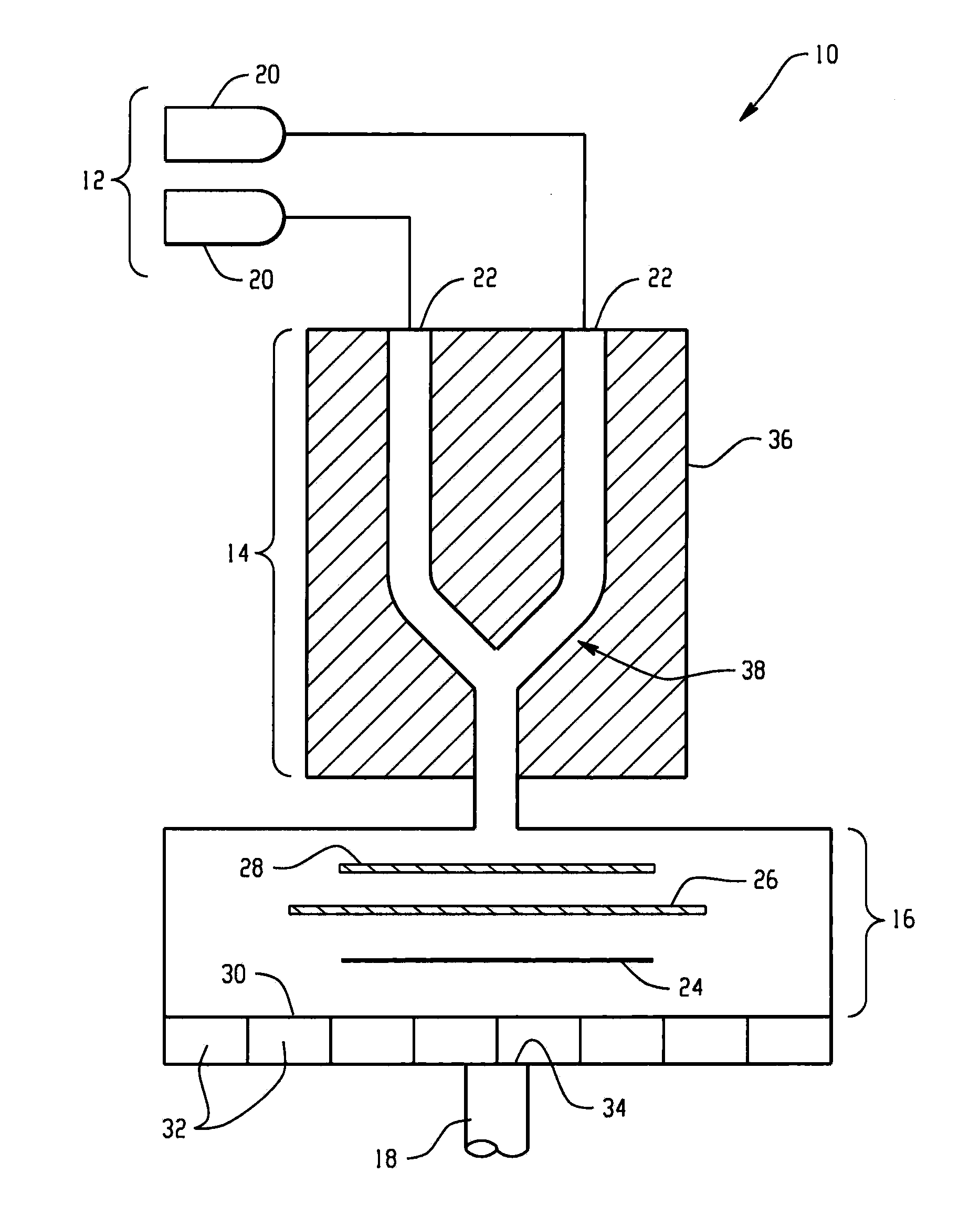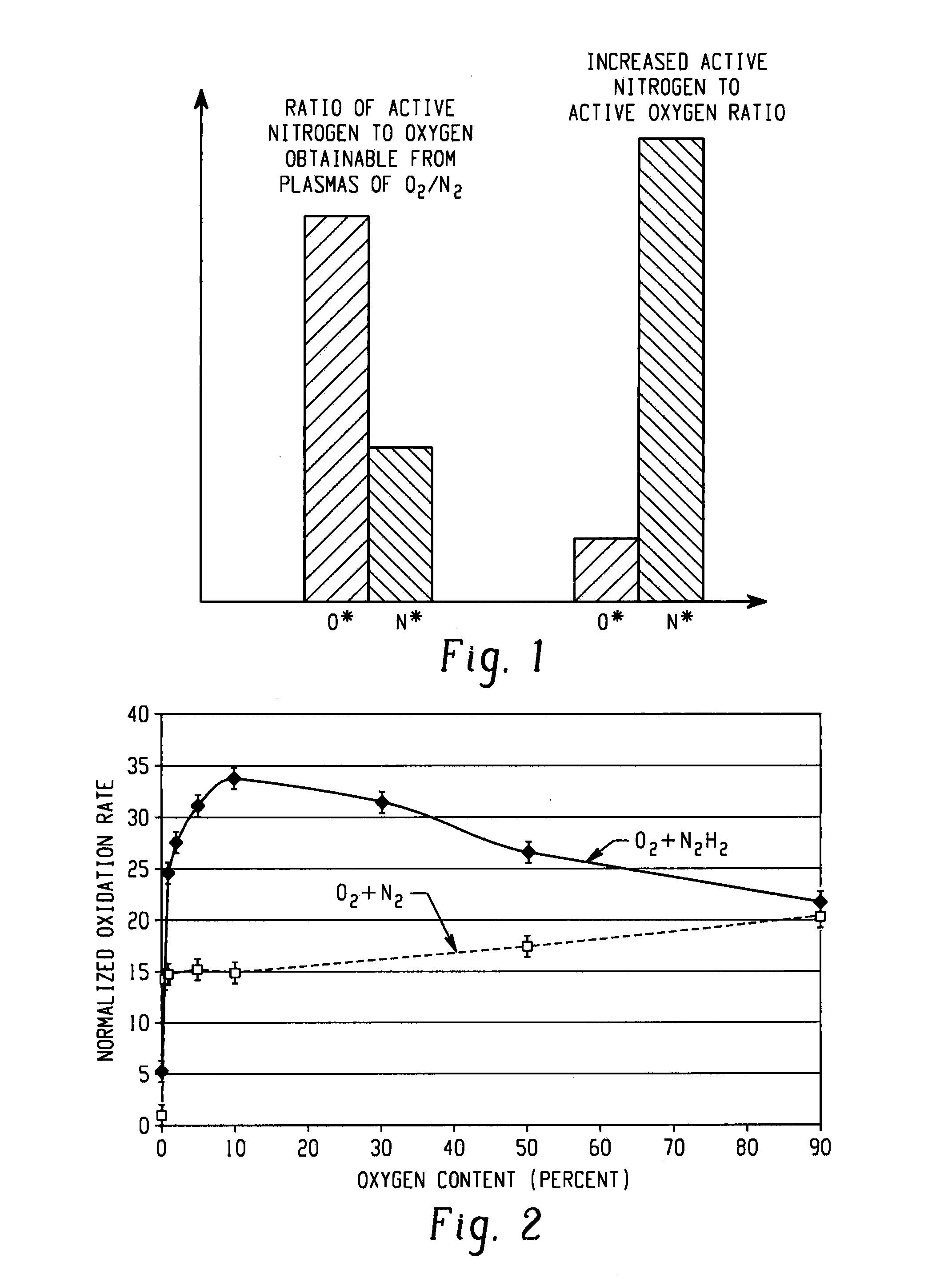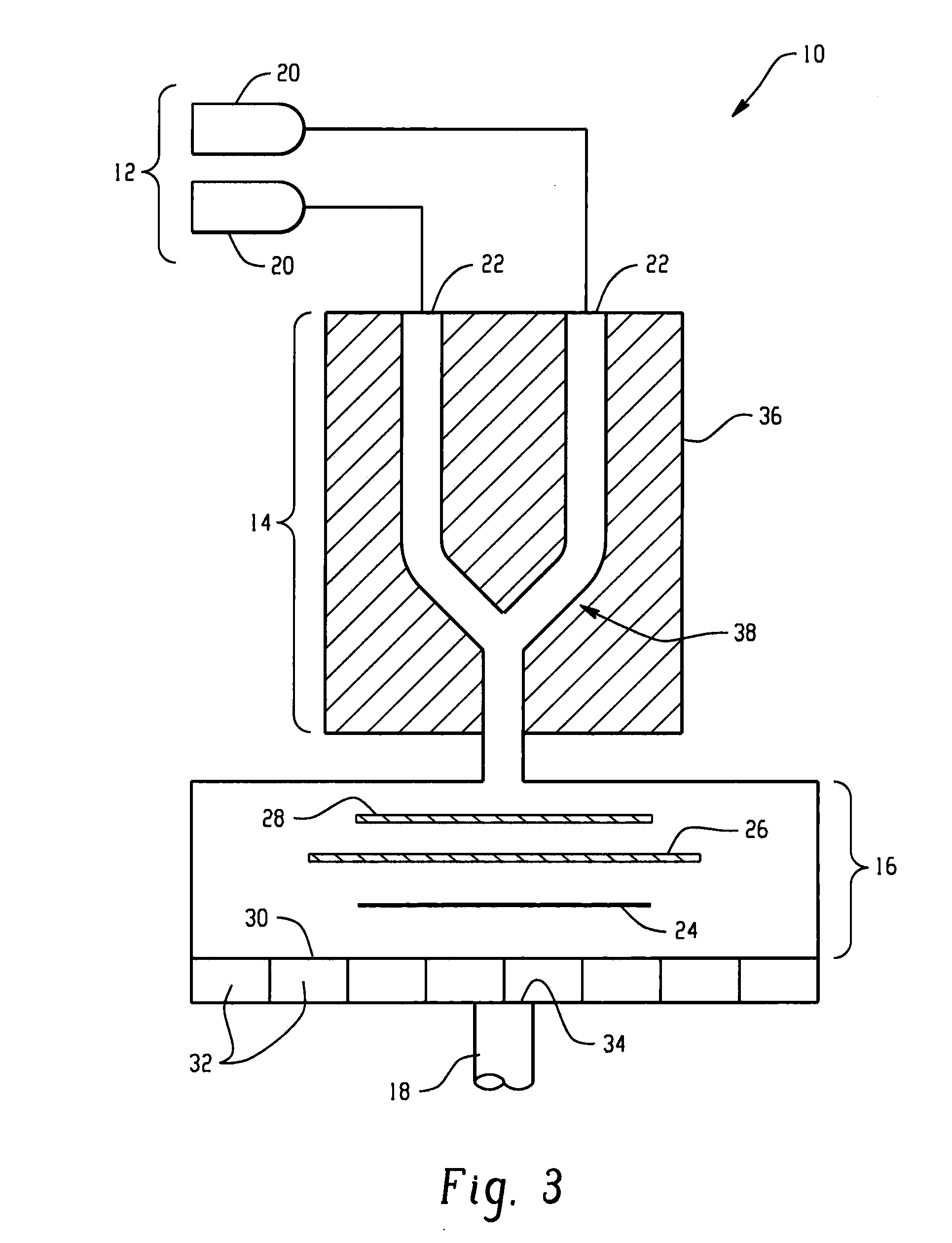Plasma mediated ashing processes
a technology of plasma and ashing, applied in the field of plasma mediated ashing processes, can solve the problems of unsatisfactory changes, damaged, photoresist removal process, etc., and achieve the effect of suppressing and/or reducing fast diffusing species
- Summary
- Abstract
- Description
- Claims
- Application Information
AI Technical Summary
Benefits of technology
Problems solved by technology
Method used
Image
Examples
example 1
In this example, photoresist coated onto a silicon substrate was exposed to a nitrous oxide stripping chemistry in a RapidStrip320 plasma ashing tool commercially available from Axcelis Technologies, Inc. The photoresist was an i-line photoresist and was deposited onto the silicon substrate at a thickness of 1.9 microns. The plasma chemistry was formed by flowing nitrous oxide gas at 7 standard liters per minute (slm) into the plasma ashing tool at a pressure of 1 Torr, a temperature of 240° C., and a power setting of 3500 Watts.
Ashing rate, cross wafer uniformity, and oxide growth of the nitrous oxide plasma stripping process was compared with oxygen-free reducing plasma (forming gas) and an oxygen based plasma. The reducing plasma was formed from a gas mixture of forming gas (3% hydrogen in nitrogen) at a flow rate of 7 slm into the plasma ashing tool at a pressure of 1 Torr, a temperature of 240° C. and a power setting of 3500 Watts. The oxygen based plasma was formed using 90% o...
example 2
In this example, a small amount of CF4 was added to different plasma gas mixtures and processed in the RapidStrip320 plasma ashing tool. Silicon substrates were exposed to the different plasma chemistries and oxide growth was measured. The results are shown in Table 1 below. In each instance, the various plasmas were formed using a flow rate of the gas mixture of 7 slm into the plasma ashing tool at a pressure of 1 Torr, and a power setting of 3500 Watts.
TABLE 1Process TimeOxide GrowthPlasma Chemistry(seconds)(Å)CF4 / N2O1033.24CF4 / 3%O2 / Forming Gas1039.54CF4 / 90%O2 / Forming Gas1038.763%O2 / Forming Gas1409.82
As shown, the addition of small amounts of CF4 during formation of the plasma resulted in minimal substrate loss as evidenced by the oxide growth, and advantageously, can be expected to produce more energetic species, which should effectively increase the ashing rate relative to the results observed in Example 1. The plasma of CF4 / N2O had the highest active nitrogen to active oxygen r...
example 3
In this example, substrate damage was measured using the RapidStrip320 plasma ashing tool in terms of silicon loss, oxide growth and oxide loss for a plasma formed from nitrous oxide (i.e., labeled as new technology), which was compared to prior art plasmas formed from O2 / forming gas mixtures with and without a small amount of carbon tetrafluoride. The forming gas composition was 3% hydrogen in nitrogen. The results are graphically shown in FIG. 5A. In each instance, the various plasmas were formed using a flow rate of the gas mixture of 7 slm into the plasma ashing tool at a pressure of 1 Torr, a temperature of 240° C. and a power setting of 3500 Watts. The substrate damage included (i) silicon loss from silicon-on-insulator (SOT) test structures, (ii) silicon-oxide growth on bare silicon test wafers and silicon-oxide loss from silicon thermal oxide test wafers. Panels (b) and (c) compare scanning electron micrograph images of a post p-MOS high-dose ion implant cleaning application...
PUM
| Property | Measurement | Unit |
|---|---|---|
| temperature | aaaaa | aaaaa |
| temperature | aaaaa | aaaaa |
| power density | aaaaa | aaaaa |
Abstract
Description
Claims
Application Information
 Login to View More
Login to View More - R&D
- Intellectual Property
- Life Sciences
- Materials
- Tech Scout
- Unparalleled Data Quality
- Higher Quality Content
- 60% Fewer Hallucinations
Browse by: Latest US Patents, China's latest patents, Technical Efficacy Thesaurus, Application Domain, Technology Topic, Popular Technical Reports.
© 2025 PatSnap. All rights reserved.Legal|Privacy policy|Modern Slavery Act Transparency Statement|Sitemap|About US| Contact US: help@patsnap.com



